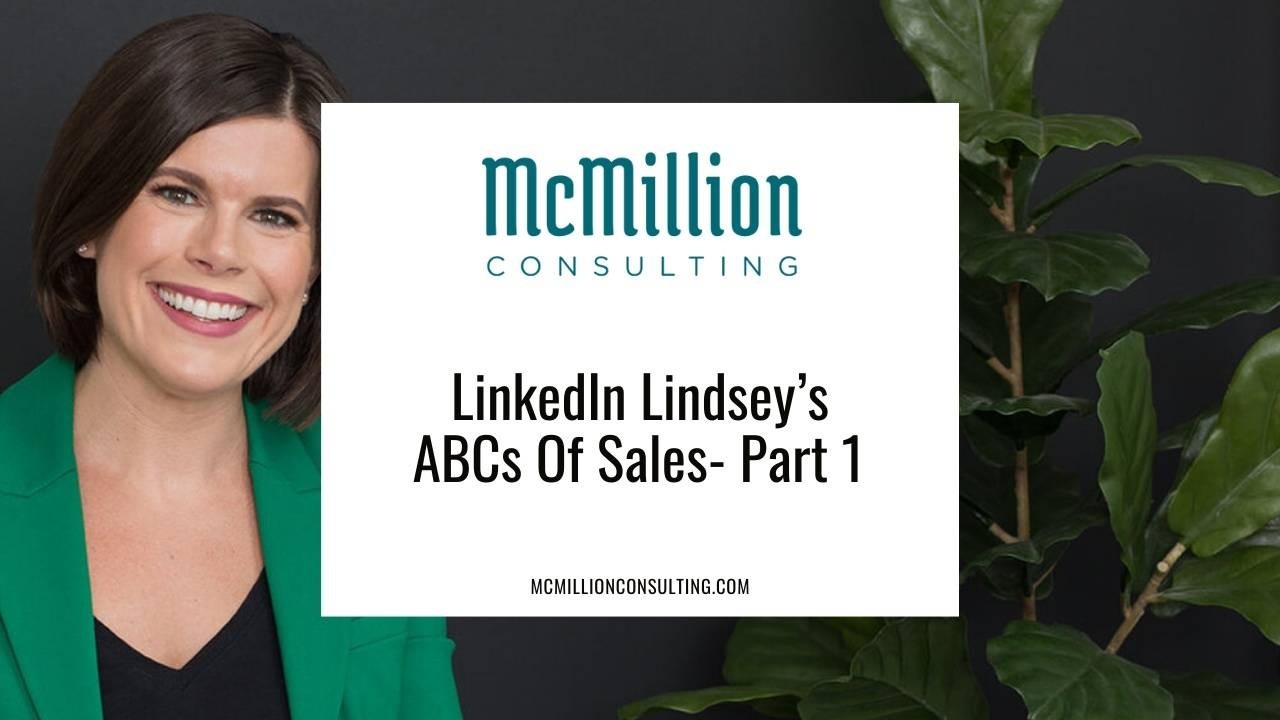LinkedIn Lindsey’s ABCs Of Sales: Part 1
Jan 09, 2024
If you’re not a total sales newbie, you’ve probably already figured out that there are countless sales experts and sales philosophies out there. While dozens of sales pros have made an impact on me, some of my favorite local (to me) voices in the sales world include John Sterling and Walker McKay. I’m sure you can think of a few influential names too.
With all the noise around selling, from prospecting to closing deals, sometimes it’s hard to know where to start. Even I admit it can be tempting to consume information without actually putting those tools into action. I want to challenge you to change that.
Over the course of my next several posts, I’ll be giving you my top three actionable tips for driving sales—my ABCs of sales, if you will—with the hope that I can give you just the right push you need to see more results and spend your time as efficiently as possible.
Let’s start at the very beginning with the “A” of my ABCs of sales. “A” stands for audience. I’ve said it before and I’ll say it again—it doesn’t matter what you're selling if you don’t know to whom you’re selling.
Do your homework.
Close your eyes for a moment and put yourself back into your college career counselor’s office. Remember all those conversations about putting your best foot forward and researching the company before your interview? Well, I want you to dust off the cobwebs and put that advice into action in your sales process. I cannot stress enough how essential it is to show up to a conversation prepared.
One piece of that homework includes viewing a prospect’s profile on LinkedIn, and another piece might include research on other platforms, like a personal or company website. Make mental notes (or real notes) of anything that stands out—maybe your prospect does Taekwondo just like you or was born and raised in your hometown. Then, instead of hoarding that information, incorporate it into your conversation to build authentic rapport more quickly. Another easy example to implement beyond profile observations is content that your prospect has shared on LinkedIn; mention this in your conversation. As with anything, it’s all about your tone.
My friend and sales expert Walker McKay says, “You get paid for the information you gather, not the information you give.” I couldn’t agree with this more. In a live conversation, this means ask questions! You will never know if you truly are the right person to help unless you learn more about them.
Regardless of the outcome, go the extra mile by proving that you care and that you listened. For example, when clients mention upcoming license exams or milestones, I often schedule an email right away to offer a timely note of encouragement or congratulations. These sorts of little touches go a long way toward making people feel heard and understood.
Empathize with the decision-making process.
I’d be remiss to talk about audience and not mention empathy. To be successful in sales, you really need to understand the challenges your prospects are experiencing and share with them the potential barriers they may face in deciding whether or not to hire you.
Remember that we as humans long for community by nature. Leverage “third-party stories”—that is, cues that others have made the same decision—to help your audience understand that they are not alone.
I have found a few of these phrases to be powerful in my sales conversations: "It's customary..." and, "I often hear people in your position say..." Then, follow up with, "But my guess is none of that resonates with you?" Or, "I'm sure you've never experienced any of that, right?" When you show that others have assessed the same facts and come to the same conclusion, you reduce the friction to a “yes.”
Also, consider to what extent your audience has agency in the buying process. CEB research shows that in larger companies, more than 7 people are involved in every purchasing decision. Considering that 70 to 80 percent of your sales conversations are likely spent educating clients, you’ll need to educate multiple people, beyond your one LinkedIn connection, to create true traction.
Finally, remember that your audience is human and so are you. If you make a mistake, like accidentally drawing the wrong conclusion from your research when you’re asking and learning about them, just own up to it. Most of the time, (good) people will understand.
Which area of audience do you need to tune up?
Stay tuned for the “B” of my ABCs of sales in two weeks! In the meantime, if you're interested in exploring how LinkedIn plays an essential part in your success, fill out my brief contact form to connect with me.



